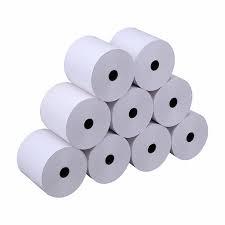Introduction
In the world of printing and documentation, thermal paper plays a vital role in delivering fast, clear, and reliable results. Commonly used in receipts, billing systems, ATMs, and medical devices, thermal paper has become an essential material for businesses worldwide. Unlike traditional printing methods that require ink or toner, thermal paper uses heat-sensitive technology to produce high-quality prints quickly and efficiently. Its widespread use in retail, banking, healthcare, and logistics makes it one of the most practical solutions for everyday printing needs. This article explores what thermal paper is, its advantages, and why it continues to be important for modern businesses.
What is Thermal Paper and How Does it Work?
Thermal paper is a special type of fine paper coated with a chemical that changes color when exposed to heat. This means no ink, toner, or ribbon is required to print. Instead, thermal printers apply heat to the paper, which activates the coating and creates text or images instantly.The process is both simple and efficient. Because there are fewer moving parts compared to traditional printers, thermal printers are faster, quieter, and less likely to experience mechanical issues. The paper itself is lightweight but durable, making it ideal for producing receipts, barcodes, and labels.Thermal paper comes in different sizes and qualities depending on its use. For example, retail stores often use rolls for receipt printers, while logistics companies rely on thermal labels for shipping packages. In the medical field, thermal paper is commonly used in ECG machines and ultrasound devices, where accuracy and clarity of results are critical.
Benefits of Using Thermal Paper
The popularity of thermal paper is no accident—it offers several clear advantages over traditional printing methods.
1. Speed and Efficiency
Thermal printing is much faster than ink-based printing. Since no ink or toner needs to be transferred, images and text appear instantly. This makes it ideal for high-volume environments like supermarkets, banks, or hospitals, where quick service is essential.
2. Cost-Effective
Thermal printers and paper reduce long-term costs because they eliminate the need for ink, toner, or ribbons. While the paper itself may be slightly more expensive than plain paper, the savings from not buying additional printing supplies often outweigh the cost difference.
3. High-Quality Prints
The print quality on thermal paper is sharp, clear, and resistant to smudging. This is especially important for receipts, barcodes, and tickets, where readability matters. Unlike ink, which can fade or smear, thermal printing produces consistent results.
4. Low Maintenance
Since thermal printers have fewer parts and no ink cartridges, they require less maintenance. Businesses using thermal paper printers benefit from reduced downtime and fewer technical issues, which improves efficiency overall.
5. Wide Applications
Thermal paper is used across industries. Retailers print receipts, airlines use it for boarding passes, logistics companies rely on it for tracking labels, and healthcare providers use it for patient reports. Its versatility is unmatched, making it a universal printing solution
If you want to know more information visit to pos software price in pakistan
Why Thermal Paper Matters for Businesses Today
In today’s fast-paced environment, businesses rely on tools that are efficient, cost-effective, and reliable. Thermal paper fits all three criteria, making it a cornerstone of modern operations.For retail businesses, thermal paper is indispensable. Cash registers, point-of-sale systems, and card machines all use thermal receipts. Customers expect a quick transaction, and thermal printing ensures receipts are ready instantly without delays.In the banking sector, ATMs and teller machines use thermal paper to provide transaction slips. Since financial records must be clear and precise, thermal printing ensures accuracy while maintaining speed.Healthcare facilities also benefit significantly. From printing patient reports to generating diagnostic images, thermal paper provides reliable and detailed results. For example, ECGs and ultrasound machines use thermal paper to capture sensitive data that doctors rely on for treatment decisions.In the logistics and shipping industry, thermal labels are essential for tracking and delivering goods. Packages require durable and legible labels, and thermal paper provides that reliability, even under rough handling.Moreover, the simplicity of thermal paper printing contributes to sustainability. With fewer resources required—no ink, no ribbons—businesses reduce waste and energy consumption. While thermal paper itself needs proper recycling due to its coating, its overall efficiency still supports eco-friendly practices compared to traditional methods.As technology evolves, thermal paper continues to improve. Newer types are designed to last longer, resist heat exposure, and maintain print clarity for extended periods. Businesses looking for reliable documentation and labeling solutions continue to choose thermal paper for its dependability.
Final Thoughts
From retail receipts to medical diagnostics, thermal paper has become an essential tool for modern businesses. Its speed, cost-effectiveness, and versatility make it a preferred choice across multiple industries. Unlike traditional printing that requires ink or toner, thermal paper simplifies the process while delivering sharp, high-quality prints. As businesses continue to prioritize efficiency and reliability, thermal paper remains one of the most practical and trusted printing solutions available today. Its importance will only grow as industries demand faster and more dependable ways to record and share information. For more articals visit here



